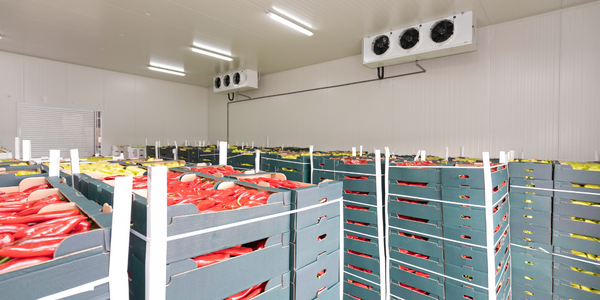Digital Transformation in Cargo Handling: A Case Study on Forecasting and Planning Capabilities Enhancement

Technology Category
- Functional Applications - Enterprise Resource Planning Systems (ERP)
- Functional Applications - Inventory Management Systems
Applicable Industries
- Transportation
Applicable Functions
- Discrete Manufacturing
- Logistics & Transportation
Use Cases
- Demand Planning & Forecasting
- Last Mile Delivery
Services
- System Integration
About The Customer
The customer is a leading provider of cargo and load handling solutions with a global presence. They are committed to becoming a leader in sustainable and intelligent cargo handling. Their business model is configure-to-order, with a sales cycle that varies between 3 to 6 months and an order-to-delivery time between 2 to 4 months. The company is focused on implementing digital transformation throughout their end-to-end supply chain to drive efficiency, with a particular emphasis on speed, automation, real-time data, and transparency. They aim to optimize their logistics and reduce inventory through improved forecasting and planning capabilities.
The Challenge
The case study revolves around a leading provider of cargo and load handling solutions aiming to become a leader in sustainable and intelligent cargo handling. The company embarked on a global initiative to implement digital transformation throughout their end-to-end supply chain to drive efficiency, focusing on speed, automation, real-time data, and transparency. However, they faced significant challenges in their business scope. Firstly, they lacked proper forecasting capabilities, relying heavily on their order book for decision-making. Secondly, their configure-to-order business model resulted in a sales cycle varying between 3 to 6 months, with the order-to-delivery time between 2 to 4 months. The company aimed to reduce this lead time to increase customer satisfaction. Lastly, the absence of planning tools led to issues with the finance team, who could not comprehensively view the order lifecycle and the associated revenues.
The Solution
The company implemented o9’s Digital Brain to address their challenges. This provided them with a holistic view of all relevant sources of demand planning, shared across all stakeholders and external dealers in a collaborative workflow. This improved their forecasting capabilities significantly. To reduce the delivery lead time, they used o9 to derive the configured product group forecast and key component demand by analyzing potential scenarios and using a bill of materials to plan component orders and inventories. For their planning capabilities, a demand plan based on quantities was easily transformed into a revenue plan considering leasing contract durations of the orders. o9 provided truly end-to-end planning software, including Demand Planning, Supply Planning, S&OP, Control Tower, Inventory Planning, and Production scheduling. The o9 Digital Brain was integrated with the ERP system (SAP HANA), the CRM (Salesforce), and the TMS (Oracle). A pilot on scheduling for discrete manufacturing was also deployed.
Operational Impact
Quantitative Benefit

Case Study missing?
Start adding your own!
Register with your work email and create a new case study profile for your business.
Related Case Studies.

Case Study
Airport SCADA Systems Improve Service Levels
Modern airports are one of the busiest environments on Earth and rely on process automation equipment to ensure service operators achieve their KPIs. Increasingly airport SCADA systems are being used to control all aspects of the operation and associated facilities. This is because unplanned system downtime can cost dearly, both in terms of reduced revenues and the associated loss of customer satisfaction due to inevitable travel inconvenience and disruption.

Case Study
IoT-based Fleet Intelligence Innovation
Speed to market is precious for DRVR, a rapidly growing start-up company. With a business model dependent on reliable mobile data, managers were spending their lives trying to negotiate data roaming deals with mobile network operators in different countries. And, even then, service quality was a constant concern.

Case Study
Digitize Railway with Deutsche Bahn
To reduce maintenance costs and delay-causing failures for Deutsche Bahn. They need manual measurements by a position measurement system based on custom-made MEMS sensor clusters, which allow autonomous and continuous monitoring with wireless data transmission and long battery. They were looking for data pre-processing solution in the sensor and machine learning algorithms in the cloud so as to detect critical wear.

Case Study
Cold Chain Transportation and Refrigerated Fleet Management System
1) Create a digital connected transportation solution to retrofit cold chain trailers with real-time tracking and controls. 2) Prevent multi-million dollar losses due to theft or spoilage. 3) Deliver a digital chain-of-custody solution for door to door load monitoring and security. 4) Provide a trusted multi-fleet solution in a single application with granular data and access controls.

Case Study
Vehicle Fleet Analytics
Organizations frequently implement a maintenance strategy for their fleets of vehicles using a combination of time and usage based maintenance schedules. While effective as a whole, time and usage based schedules do not take into account driving patterns, environmental factors, and sensors currently deployed within the vehicle measuring crank voltage, ignition voltage, and acceleration, all of which have a significant influence on the overall health of the vehicle.In a typical fleet, a large percentage of road calls are related to electrical failure, with battery failure being a common cause. Battery failures result in unmet service agreement levels and costly re-adjustment of scheduled to provide replacement vehicles. To reduce the impact of unplanned maintenance, the transportation logistics company was interested in a trial of C3 Vehicle Fleet Analytics.

Case Study
3M Gains Real-Time Insight with Cloud Solution
The company has a long track record of innovative technology solutions. For example, 3M helps its customers optimize parking operations by automating fee collection and other processes. To improve support for this rapidly expanding segment, 3M needed to automate its own data collection and reporting. The company had recently purchased the assets of parking, tolling, and automatic license plate reader businesses, and required better insight into these acquisitions. Chad Reed, Global Business Manager for 3M Parking Systems, says, “With thousands of installations across the world, we couldn’t keep track of our software and hardware deployments, which made it difficult to understand our market penetration.” 3M wanted a tracking application that sales staff could use to get real-time information about the type and location of 3M products in parking lots and garages. So that it could be used on-site with potential customers, the solution would have to provide access to data anytime, anywhere, and from an array of mobile devices. Jason Fox, Mobile Application Architect at 3M, upped the ante by volunteering to deliver the new app in one weekend. For Fox and his team, these requirements meant turning to the cloud instead of an on-premises datacenter. “My first thought was to go directly to the cloud because we needed to provide access not only to our salespeople, but to resellers who didn’t have access to our internal network,” says Fox. “The cloud just seemed like a logical choice.”


